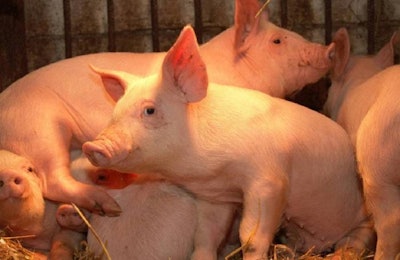
An avian influenza strain that has been circulating in the U.S. has the potential to infect pigs.
As worrying, the standard hemagglutination test used to detect flu in livestock and a vital tool in influenza surveillance, is ineffective for the H3N8 virus in pigs.
The findings come from a study conducted by the Pirbright Institute in the U.K. and Spain’s CReSA, which found that two different strains of the H3N8 virus were able to replicate and infect pigs. While one was isolated from seals, the other was an avian influenza strain.
Avian influenza A viruses are not only important for their impact on poultry production. They have gained increasing attention due to their ability to cross the species barriers and cause severe disease in humans and other mammals, such as pigs.
Highly adaptive, able to infect humans
The H3 viruses, and in particular H3N8, are highly adaptive, and are found in poultry and multiple other avian and mammal hosts and, while no human cases have been found to date, a study in the 1950s showed that the strain is able to infect humans.
With humans being more closely related to pigs than to other livestock species, concern arises when avian strains come together and reassort with pig strains to create a highly pathogenic virus that is more readily able to infect humans.
Lessons to be learned
This is an unpleasant thought to ponder, although the researchers talk only about potential. But it is worth considering for a moment the human cases of infection with avian influenza H5N1. In excess of 840 cases of the avian influenza strain have been reported in humans, with the number of fatalities inching towards 500.
If H3N8 is able to cross the species barrier and circulate undetected in pigs, the chances of it coming together with circulating strains of avian influenza A visues are increased.
This would not only have serious implications for poultry and livestock production and biosecurity, but also for broader public health.
According to Pirbright’s Dr. Maria Montoya, the H1N1 strain that caused the 2009 human flu pandemic had previously been circulating in the pig population prior to infecting humans. She also says that with H3N8 acting as a “sneaky” virus in pigs that is able to go undetected through standard testing, it is not hard to imagine that it could be a candidate for future human outbreaks.

















